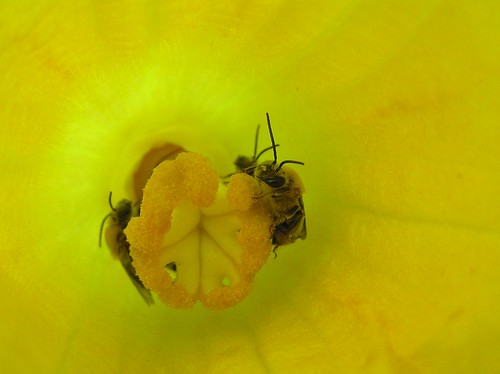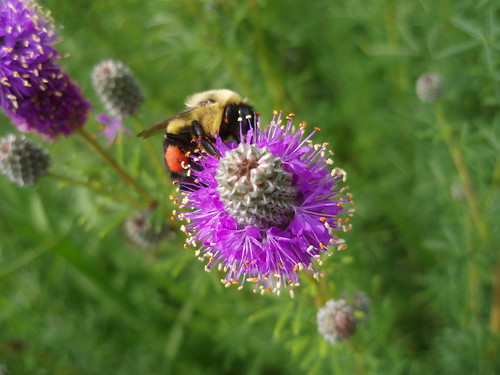
A recently awarded USDA Conservation Innovation Grant (CIG) will fund research into bee-friendly seed mixes.
A partnership made up of the Xerces Society, University of Wisconsin Center for Integrated Agriculture Systems and USDA’s Natural Resources Conservation Service in Wisconsin is working to develop and test seed mixes that will provide the best habitat for native bees. CIG-funded projects use innovative technologies and approaches to address natural resources issues.
Three-fourths of the world’s flowering plants depend on pollinators to reproduce, and in the U.S., bees are the main pollinators of fruits and vegetables. But bees, bats and other pollinators are struggling as habitat loss, disease, parasites, and environmental contaminants have all contributed to the decline of many species of pollinators, including the more than 4,000 species of native bees in North America.
To ensure that bees and other pollinators don’t just survive, but also thrive, USDA programs provide funding and technical assistance for farmers to implement pollinator-friendly practices on their lands. One important practice is incorporating plantings that attract native bees and other pollinators to the borders of fields and other areas and feed them a varied diet throughout the year.
Providing healthy habitat for native bees will also help feed managed hives of European honey bees—which are used to pollinate many commercial crops in the U.S.—and make them heartier, as they too reap the benefits of a diverse and healthy diet.

That’s where bee-friendly seed mixes come in. Four half-acre demonstration sites have been planted using the new seed mixes in field borders and buffer areas: on apple and fresh vegetable farms, a cranberry operation, and a cucumber-and-pepper farm. The first results will be seen this summer, when scientists will observe how quickly and successfully the new plantings establish themselves, and how quickly the bees return.
Getting the right seed mix to attract and sustain a healthy native bee population is a challenge. Bees need flowers—but not just any flowers. They need to be the right color and size, and bloom at the right times.
Bees are attracted to white, yellow, blue or purple flowers. Bees also need a variety of sizes, ranging from big sturdy flowers for the bumble bees to small delicate ones for the sweat bees. Timing is also important—for example, bees need some flowers to be steadily in bloom from the time the bees first crawl out of their winter nests in early spring until they go back in late fall.
Find out more about Conservation Innovation Grants.
Check out more conservation stories on the USDA blog.
Follow NRCS on Twitter.

